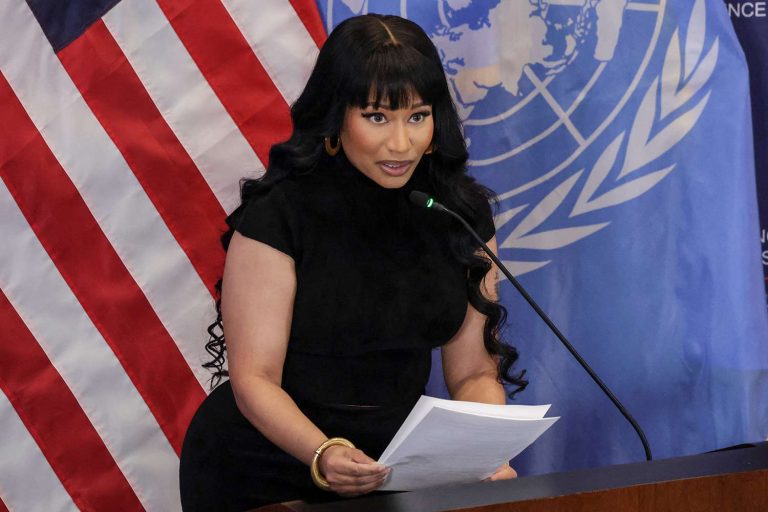
Screenshot
 The International Maritime Organization convened this October 2025 to vote on a framework that could reshape global shipping and redefine climate justice.
The International Maritime Organization convened this October 2025 to vote on a framework that could reshape global shipping and redefine climate justice.
The IMO Net-Zero Framework, agreed upon this past April at MEPC 83 – The Marine Environmental Protection Committee, represents the first legally binding global regulation to decarbonize international shipping, a sector responsible for emissions equivalent to major economies like Japan or Germany.
Yet as this historic moment approaches, a critical question hangs in the balance: Will this framework deliver both the ambitious emissions reductions and the equitable transition that our planet and its most vulnerable communities desperately need? The answer depends entirely on decisions to be made in the coming weeks and months.
THE FRAMEWORK
The IMO Net-Zero Framework introduces an innovative two-tier system that sets increasingly stringent greenhouse gas intensity limits for ships while creating economic incentives through a carbon pricing mechanism.
Ships that fail to meet targets will pay penalties: $100 per tonne for moderate non-compliance and a steep $380 per tonne for those falling furthest behind. These fees will generate an estimated $10 billion to $12 billion annually, flowing into a novel IMO Net-Zero Fund designed to support the transition.
On paper, this is groundbreaking. The framework will drive shipping toward zero-emission fuels, with modeling from University College London and UMass indicating that e-fuels (particularly green ammonia) will become the dominant solution by the mid-2040s.
Yet here lies the framework’s central tension: while it will eventually drive the right technological outcomes, it may arrive too late for a smooth transition and risk leaving the world’s most vulnerable countries to bear disproportionate costs along the way.
The IMO’s own 2023 greenhouse gas strategy established two equally important objectives: reaching net-zero emissions by or around 2050 and achieving this through a “just and equitable transition.”
UN Trade and Development analysis reveals ship transport costs may increase by 80 per cent, with the broader maritime logistics costs (which would affect imports) potentially rising by 30 per cent.
For Small Island Developing States (SIDS) and Least Developed Countries (LDCs), already bearing the brunt of climate impacts they did little to cause, these increases threaten food security, economic development, and basic quality of life.
The framework’s projected revenue of $10 billion to $12 billion annually, while significant compared to other climate finance mechanisms, pales against the estimated trillion dollars of additional investment needed by 2050. Every dollar must work extraordinarily hard to serve both decarbonization and equity.
WHY THIS MATTERS
The IMO framework is more than a shipping policy; it’s a test case for global climate governance in sectors operating beyond national boundaries. International shipping accounts for roughly 90 per cent of global trade; how we decarbonize it will shape economic development pathways for decades.
Moreover, shipping’s transition challenge mirrors that of other transport sectors but with unique complications. A ship’s route is more than often unpredictable, following wherever cargo demands and, therefore, requiring fuel infrastructure in numerous global locations.
This creates a chicken-and-egg problem: ship owners won’t invest in new fuel technologies without infrastructure, and infrastructure won’t materialize without demand. The solution requires parallel progress on supply and demand.
Countries with potential for renewable energy production (including many in Africa) could become major green fuel producers, but they face higher costs of capital and infrastructure deficits. Strategic deployment of Net-Zero Fund resources could help build this infrastructure while creating economic opportunities in regions that have historically been excluded from energy transition benefits.
WHAT ADOPTION MUST DELIVER
When IMO member states gather in October, they must adopt a framework that explicitly commits to resolving these tensions. The adoption process should: Affirm the dual mandate.
Clearly restate that just and equitable transition is co-equal with emissions reduction, not subordinate to it. Establish guardrails for guidelines. Provide clear direction that reward mechanisms must preserve adequate resources for vulnerable cause, these increases threaten food security, economic development, and basic quality of life.
The framework’s projected revenue of $10 billion to $12 billion annually, while significant compared to other climate finance mechanisms, pales against the estimated trillion dollars of additional investment needed by 2050. Every dollar must work extraordinarily hard to serve both decarbonization and equity.
WHY THIS MATTERS
The IMO framework is more than a shipping policy; it’s a test case for global climate governance in sectors operating beyond national boundaries. International shipping accounts for roughly 90 per cent of global trade; how we decarbonize it will shape economic development pathways for decades.
Moreover, shipping’s transition challenge mirrors that of other transport sectors but with unique complications. A ship’s route is more than often unpredictable, following wherever cargo demands and, therefore, requiring fuel infrastructure in numerous global locations.
This creates a chicken-and-egg problem: ship owners won’t invest in new fuel technologies without infrastructure, and infrastructure won’t materialize without demand. The solution requires parallel progress on supply and demand.
Countries with potential for renewable energy production (including many in Africa) could become major green fuel producers, but they face higher costs of capital and infrastructure deficits.
Strategic deployment of Net-Zero Fund resources could help build this infrastructure while creating economic opportunities in regions that have historically been excluded from energy transition benefits.
WHAT ADOPTION MUST DELIVER
When IMO member states gather in October, they must adopt a framework that explicitly commits to resolving these tensions. The adoption process should: Affirm the dual mandate.
Clearly restate that just and equitable transition is co-equal with emissions reduction, not subordinate to it. Establish guardrails for guidelines.
Provide clear direction that reward mechanisms must preserve adequate resources for vulnerable country support, that distribution boundaries must be interpreted to address shipping’s full climate impact, and that credit trading must include safeguards against perpetuating inequity.
Commit to transparent, inclusive guideline development. The negotiations beginning immediately after adoption must meaningfully include voices from SIDS, LDCs, and civil society organizations representing vulnerable communities, not just industry and major maritime nations.
Set review mechanisms that maintain ambition. Ensure that the 2032 revision of targets for 2036-2040 incorporates both updated climate science and assessments of just transition progress.
A CLOSING REFLECTION
The transition away from fossil fuels in shipping is inevitable. The only question is whether it will be orderly or chaotic, equitable or exploitative, a model for climate cooperation or another instance of the powerful protecting their interests while externalizing costs onto the vulnerable.
The close of the extraordinary session of the MEPC proved that the IMO has sadly become vulnerable to political capture. The Net-Zero Framework, which had been approved by 64 countries in April with only 16 opposed, was deferred for one year despite having clear majority support.
The process was reportedly bent to the will of certain influential actors through threats and intimidation, rather than genuine consensus- building. The IMO Net-Zero Framework has been described as a “momentous achievement,” and in many ways it is.
But achievements are measured by outcomes, not intentions. Without clear regulatory signals, the industry will continue to procrastinate on investments in zero-emission technologies.
The deferral creates regulatory uncertainty that could delay the transition by years, making it even harder to meet 2030 and 2040 targets.
The writer is a maritime policy advisor at the Miconesian Center for Sustainable Transport (MCST), specialising in sustainable shipping and women’s advancement.



